


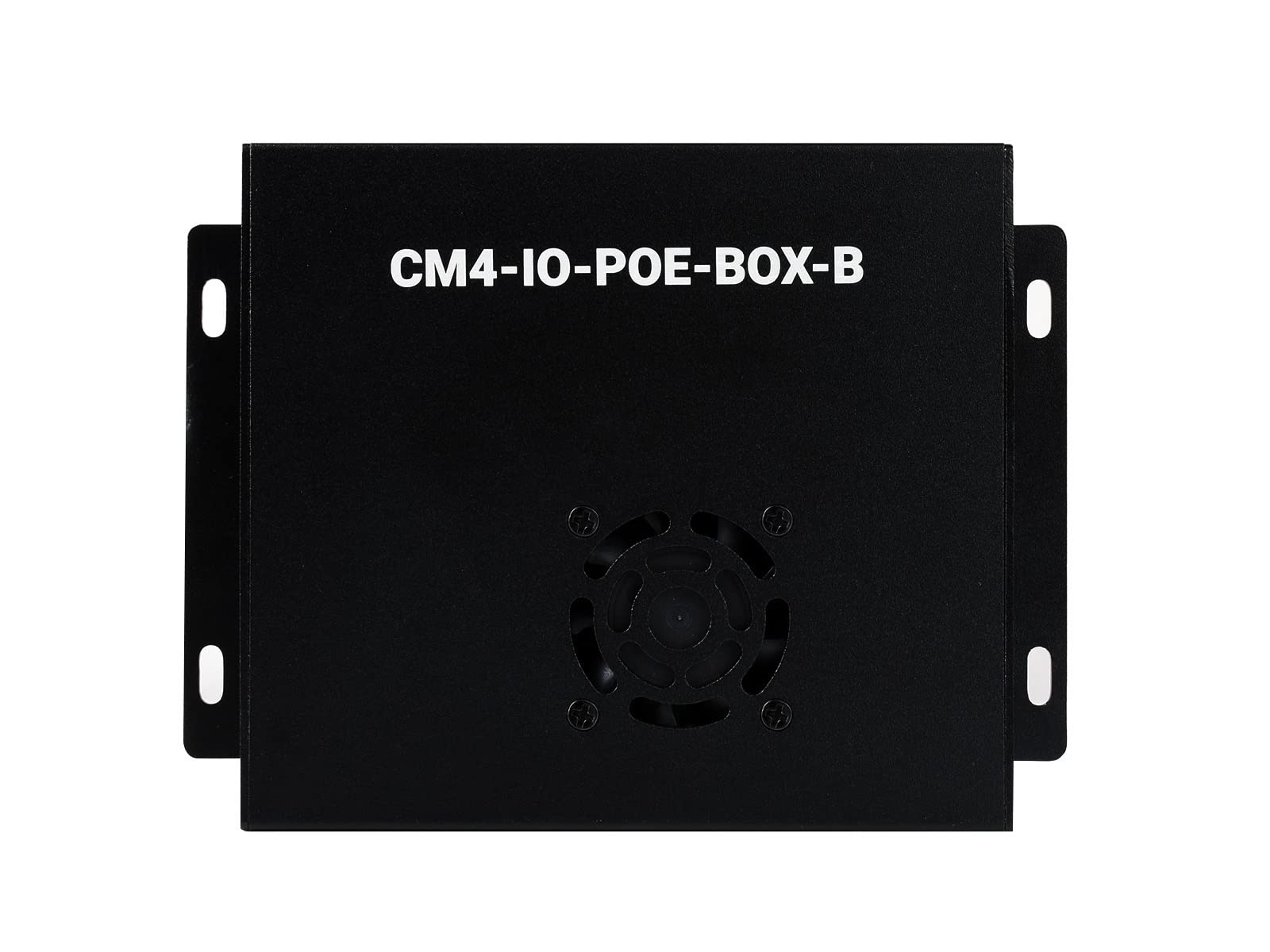
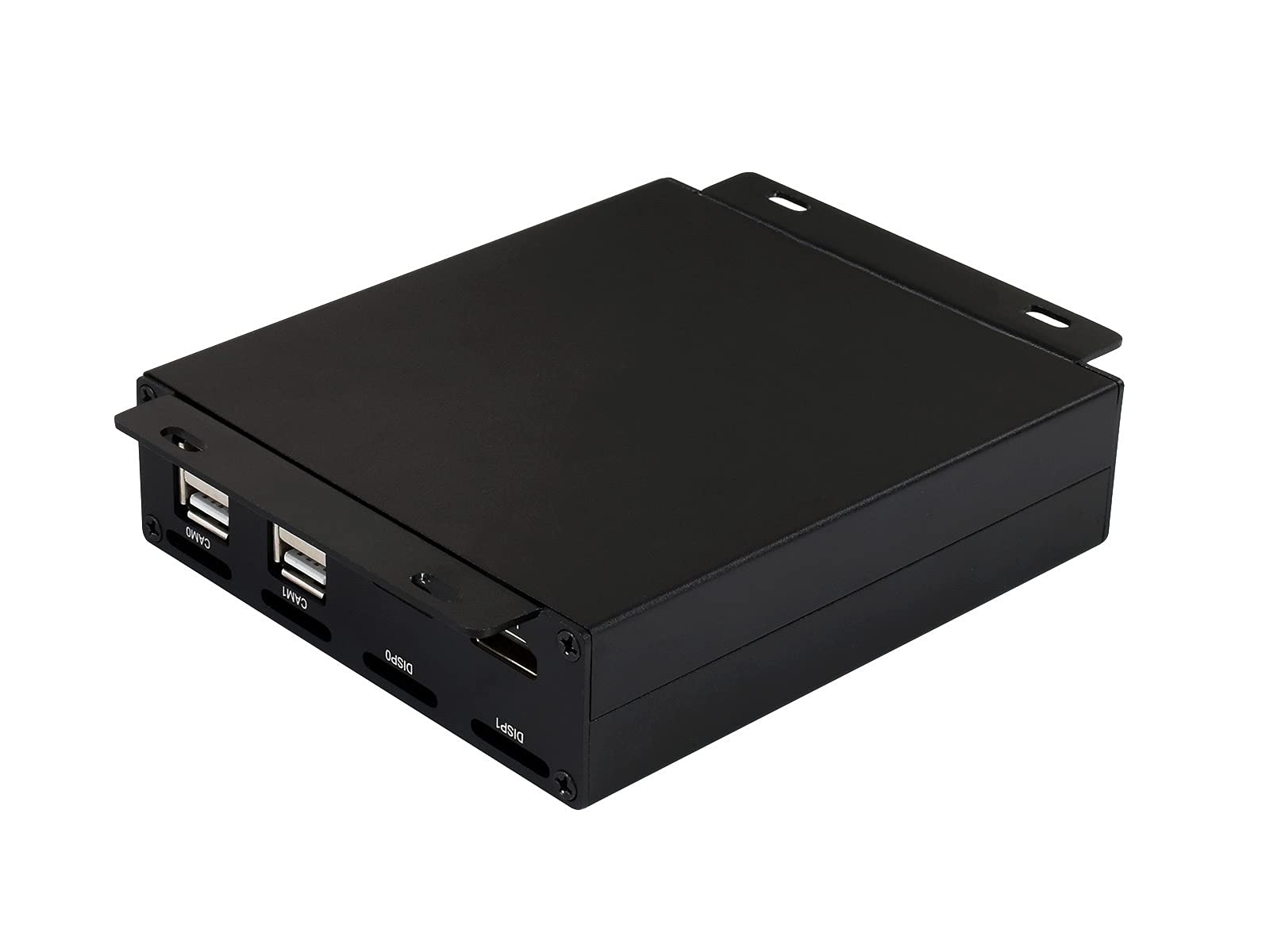
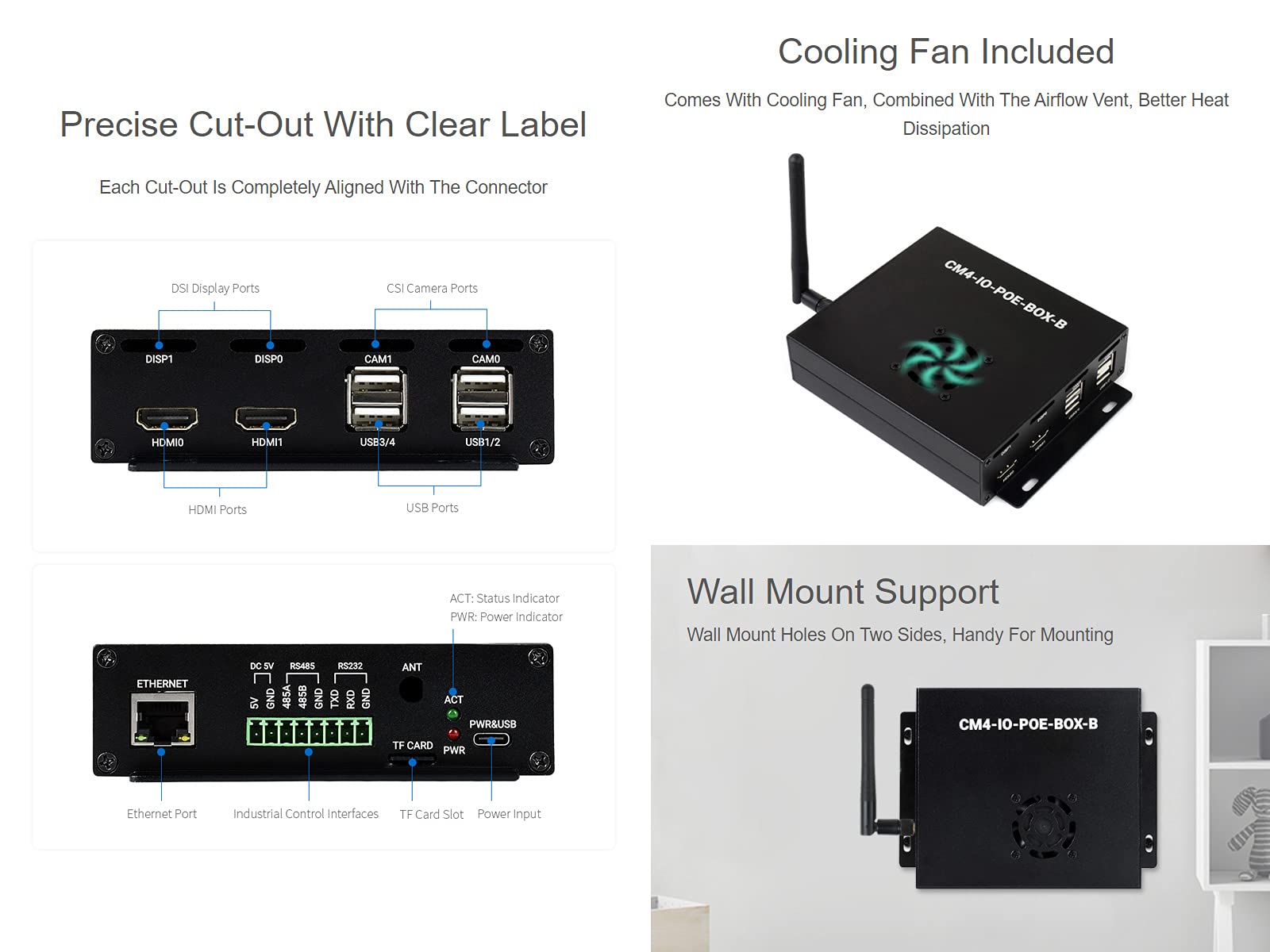
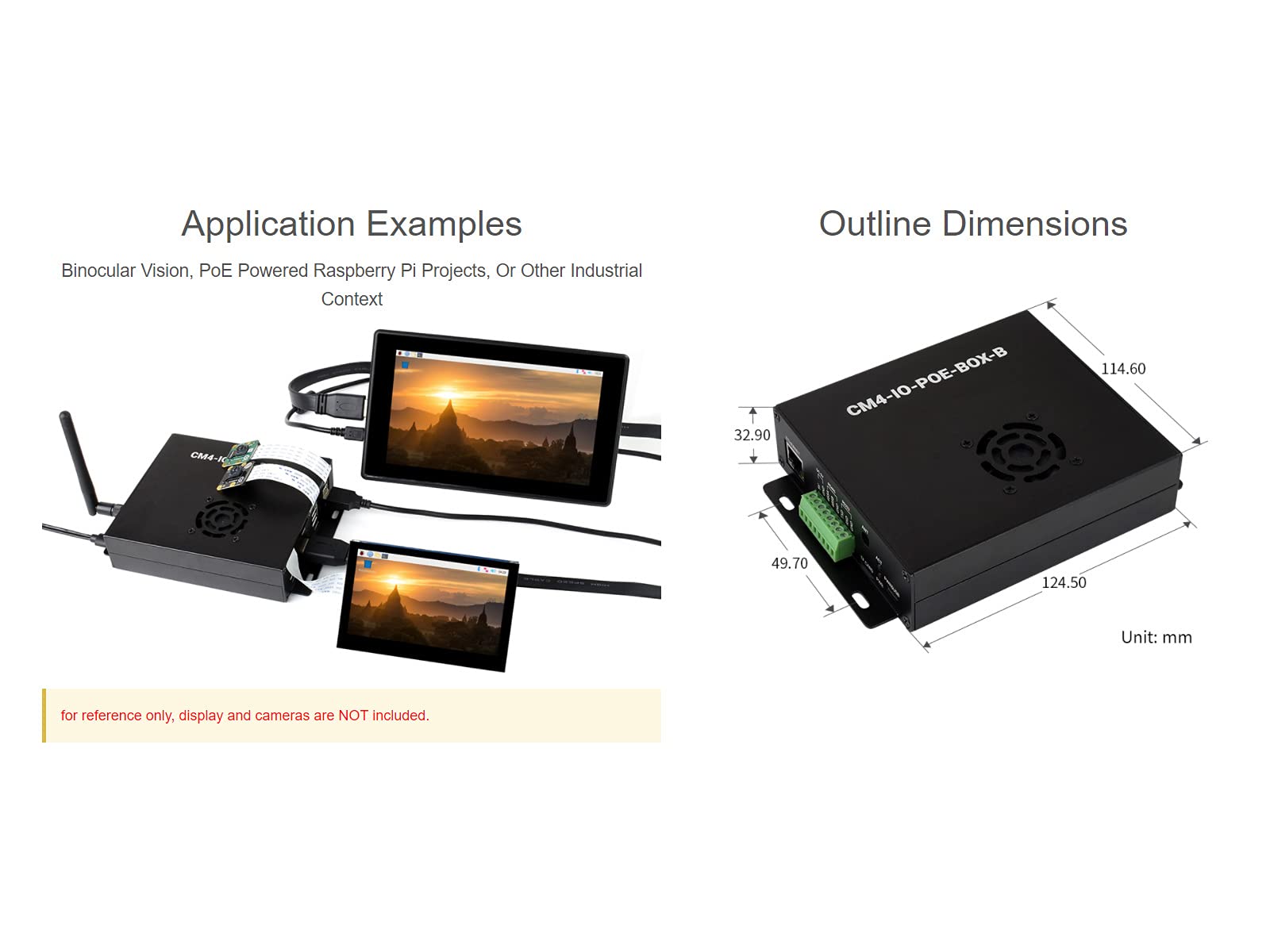
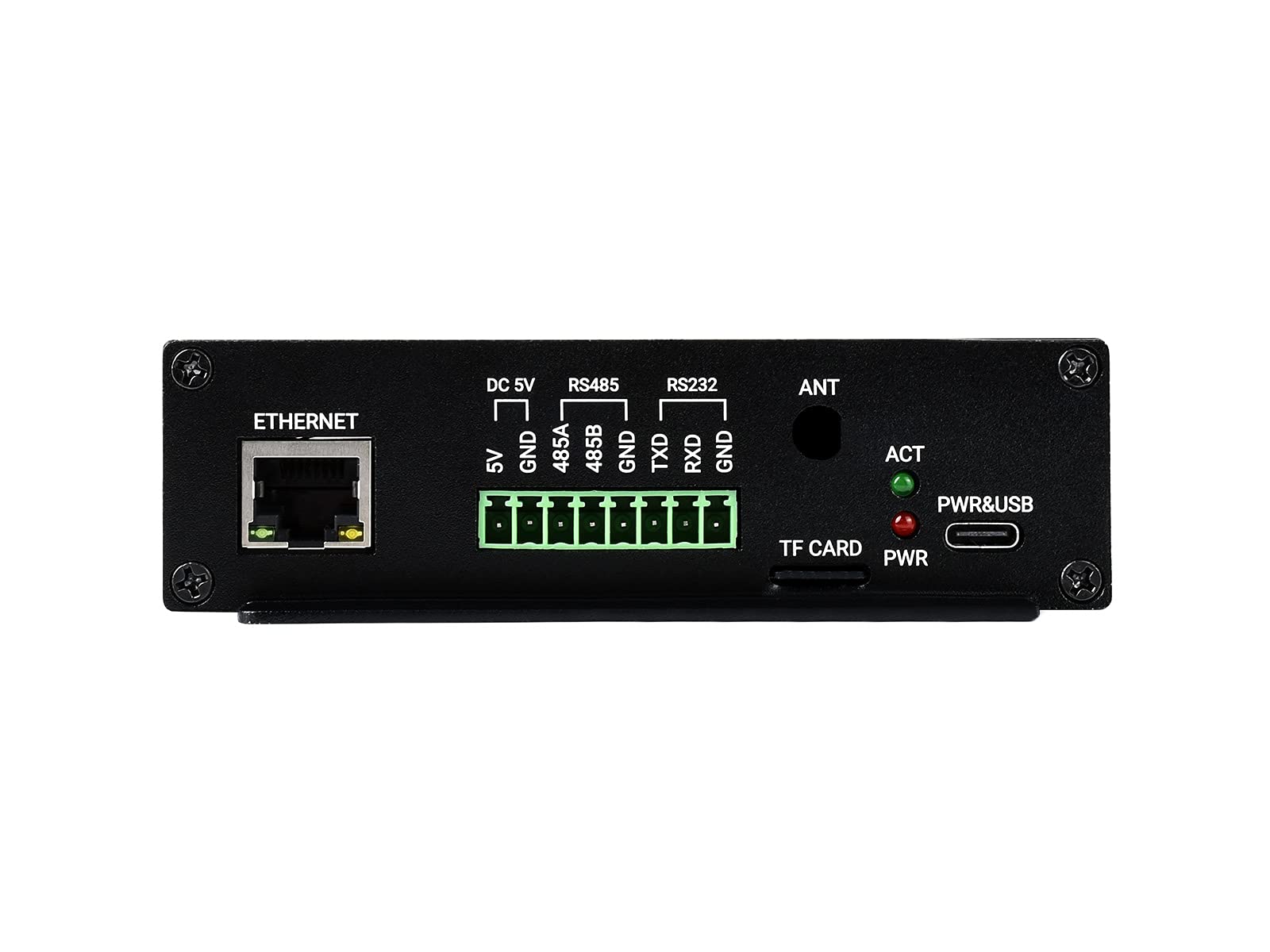

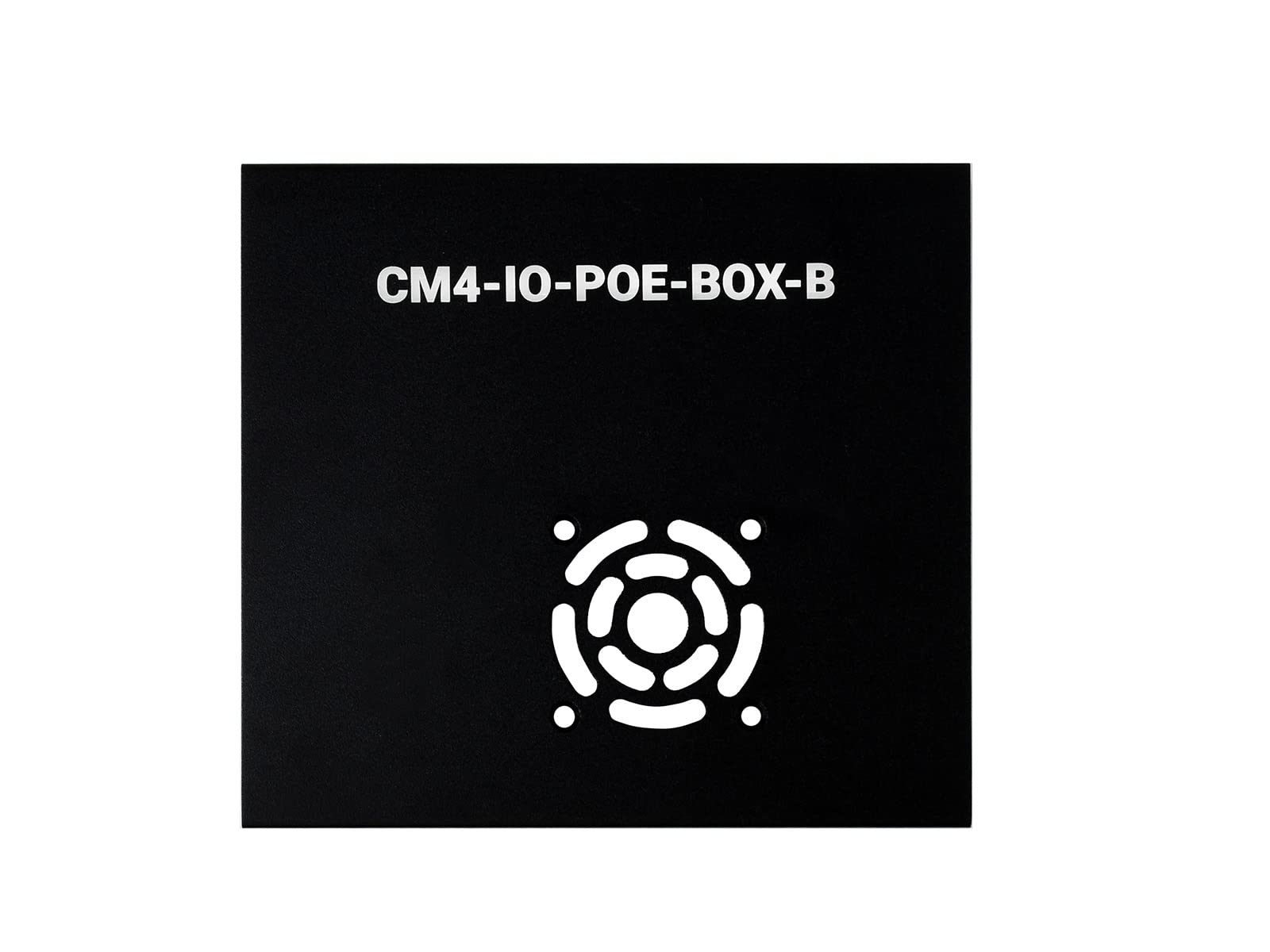

🚀 Unleash Your Creativity with Waveshare!
The Waveshare PoE Mini-Computer (Type B) is a robust platform designed for the Raspberry Pi Compute Module 4, featuring a metal case with a cooling fan for enhanced heat management. It offers a variety of onboard connectors, making it easy to build and connect to various devices, all while being compatible with Raspberry Pi OS.
| Processor Brand | Broadcom |
| Wireless Compability | Bluetooth |
| Compatible Devices | Personal Computer |
| Connectivity Technology | USB, HDMI |
| Operating System | Raspberry Pi OS (Linux) |
M**E
What's not to like. WaveShare and RPI is a rock solid solution for any IOT problem
I have bought several WaveShare products in the past, been very happy with my purchases, and I keep coming back to buying this particular enclosure. It's so versatile, yet nicely compact. I love that I can power it over POE; or I can go with USB-C power and WiFi for connectivity. Flexibility is awesome! And all the important ports that I want for any variety of IOT projects are accessible. If that's not enough, standard RPI Hats can be added when needed.A single RPI Hat stands a good chance of physically fitting inside the case, too. Although there are of course no promises as there are so many different third-party hats with different dimensions. When stacking multiple hats, you might have to 3D print a new top for the case. But that's fortunately very easy to do, as the case doesn't have any odd irregular shapes.The only problem that I ever encountered with these cases is the RS485 interface. It only outputs 3.3V differential signals, and it tries to automatically switch data direction based on whether the RPI is actively sending or receiving. I have seen these type of interfaces before, and they can work beautifully on some RS485 buses. But then again, they can also fail badly, if there are other pull-up/down resistors on the bus that interfere with the relatively weak signal from this board.Fortunately, and I can't praise WaveShare enough here, the manufacturer publishes the schematics for the board. And it turns out that if you remove MOSFET S1, the RS485 interface permanently enables the transmitter and then outputs a stronger signal. That fixed all my issues. RS485 can now successfully drive my DMX lighting system. This is a very application-specific problem and won't necessarily apply to everyone else. But it drives home how helpful it is if schematics are available. That deserves a full 5 stars!
E**K
Great build quality and a sturdy metal box, but you can't fit most PCIe cards inside
This review is for the Waveshare PoE Mini-Computer (Type B) Based On Raspberry Pi Compute Module 4, but much of this also applies to the Waveshare PoE Mini-Computer Based On Raspberry Pi Compute Module 4.First, I have to say that the build quality of the PC board and box are superb. I would recommend this PC board over the standard Compute Module 4 IO board. The main drawbacks to this board are not USB 3.0 ports and not enough room to plug in most PCIe boards, especially if you plan to close the cover on the box. You are pretty much forced to use a PCIe extender cable. On the good side this is a very small board that won't take up much room on your test bench or table. Even with the PCIe extender cable, it takes less space than the official Compute Module 4 board. I recommend getting a PCIe extender cable with a socket that has magnetic feet to hod the PCIe card upright. But, a word of warning. This box is made of an aluminum composite that doesn't hold magnets.Another nice extra is external screw terminals for an RS-232 connection and an R-S485, plus 5V power with ground. Those go to serial ports 3 and 5. You can still connect a console terminal to port 0 or 1 on the internal 40-pin connector. The Real Time Clock is standard even on the official CM4 IO board, but there is an added PWM fan controller, but sadly no temperature control software for the fan controller.A couple of minor mechanical issues should be noted. The included screws for the fan are about 5mm too long if you put a heat sink on the CPU. I cut 5mm off the end of the fan screws and then the screws didn't hit the heat sink and prevent the lid from closing. My other gripe is that the cutout for the flash card is too large and it is very easy to accidentally slide the flash card inside the empty space around the socket. The result is that you have to unscrew the bottom of the box to retrieve your flash card that is rattling around underneath the circuit board. If you're going to be removing the flash card a lot, then that could be an issue.Before you buy this board and box, take a look at the larger Waveshare CM4 PoE IO Board and box. That has USB 3.0 ports and more room inside, but lacks a PCIe socket. There are also larger Waveshare boards that better fit M2 storage or full size PCIe boards. Don't hesitate to buy Waveshare products. They are rock solid.
V**I
Great to have a POE computer in a proper case.
Used this with a CM4 8Gb RAM and 32GB eMMC. FOllow the instruction on the Waveshare wiki on how to install the OS on the onboard eMMC. The interna PCIe also very handy as I connected a 512Gb NVMe drive making this a very powerful little computer, always on, with plenty of storage and a few Watts of power use.
J**N
Works well, but not great for PCIe usage
I bought this board+case because I needed a carrier for my CM4 with a PCIe slot. While the port works fine (albeit with some boot/config.txt modifications - which I'll get to later), the case and positioning of the slot mean that nothing will actually fit. Normal desktop computer cases always have dedicated slots for PCIe cards, but not this case. You can remove the fan and lid to add a card, but the standardized metal bracket on most cards will need to be removed. I have had some luck using a short riser cable to stuff a wifi card in the case, but keep in mind that any PCIe card with IO ports will be inaccessible this way. If you are buying this board for the PCIe slot, I recommend avoiding the case to save some money, and 3D printing your own (or just leaving the board exposed - an eyesore, but fine in a lab setting).As far as other usage of the board goes, everything is fine... with configuration. This is not Waveshare's fault (unlike the disregard for normal PCIe usage), but a flaw with the Raspberry Pi CM4. For all of the Linux distributions I've tried, as well as openWRT, the USB ports won't work at all unless you add a line of text to the `config.txt` file in the `boot` partition. This line is `dtoverlay=dwc2,dr_mode=host`.Going back to the PCIe usage, for some cards (not necessary for my Intel AX210, but was required for my Qualcomm Atheros QCN9074), you'll also need to add this line to fix some mysterious errors you'll find in the dmesg logs: `dtoverlay=pcie-32bit-dma`Beyond those issues, the board has lots of useful ports, supports PoE, and is at a good price point. If PCIe was treated as a first-class feature in the case, I would be completely satisfied giving this a 5-star rating.
Trustpilot
1 day ago
1 week ago